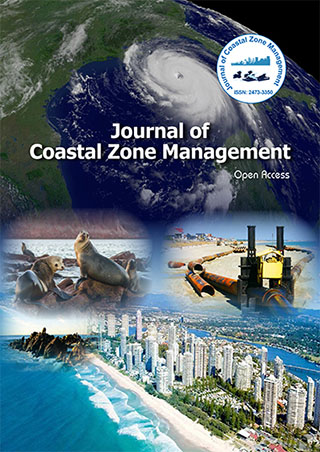Indexed In
- SafetyLit
- RefSeek
- Hamdard University
- EBSCO A-Z
- OCLC- WorldCat
- Publons
Useful Links
Share This Page
Journal Flyer

Open Access Journals
- Agri and Aquaculture
- Biochemistry
- Bioinformatics & Systems Biology
- Business & Management
- Chemistry
- Clinical Sciences
- Engineering
- Food & Nutrition
- General Science
- Genetics & Molecular Biology
- Immunology & Microbiology
- Medical Sciences
- Neuroscience & Psychology
- Nursing & Health Care
- Pharmaceutical Sciences
Perspective - (2022) Volume 25, Issue 7
Importance and Organization of Coastal Ports and its Types
Received: 06-Jul-2022, Manuscript No. JCZM-22-17684; Editor assigned: 11-Jul-2022, Pre QC No. JCZM-22-17684 (PQ); Reviewed: 25-Jul-2022, QC No. JCZM-22-17684; Revised: 01-Aug-2022, Manuscript No. JCZM-22-17684 (R); Published: 08-Aug-2022, DOI: 10.35248/2473-3350.22.25.511
Description
A coastal port is a harbour or location with the capacity to house several boats and vessels (transferring passengers or cargo) and to permit ongoing or infrequent transportation. A port is just a location that makes it easier for ships to load and unload cargo. It is a point of confluence across domains for the movement of freight, technically speaking. Coastal ports operate as the catalysts for a region's social and economic development by facilitating trade and acting as a centre for community activities.
Coastal ports might be quite important to a country because they advance the commercial environment and trade situation. Ports can also be crucial from a military standpoint because they serve as a base for warships before they go for the front lines of combat. The coastal port can be a man-made structure or a natural installation that serves as a location for loading and unloading freight. Ports can be used by both huge oceangoing vessels and inland waterways like rivers and lakes. The ability of different types of ships to enter and dock at the port depends heavily on the depth of the ports.
Any nation's coastal port authority is a government- or semi-government- run public organisation responsible for the construction, upkeep, and management of vital seaport infrastructure for trade and transit. In short, the seaport authority oversees or maintains vessel traffic and helps to manage the millions of people who work in the harbour. The first port administration was the London Port Authority. It was put into effect in 1908.
All ports and marine services, facilities, and operations within the relevant country's territorial waters are governed, authorised, and managed by the Coastal Port Authority, which also oversees vessel traffic, improves navigational safety, and supports security and environmental management at the Coastal port. Fishing ports primarily deal with business since they engage in fishing. The recreational activity of fishing might also be considered. The presence of fish in that area of the ocean is absolutely necessary for a fishing port to exist. An inland port or a seaport might be a fishing port.
Fishing ports are frequently marketed ports that are typically used for aesthetic or recreational purposes. These are the ports that let their clients engage in organised and controlled fishing. When these coastal ports are operating correctly, they generate the most money. The fishing port has a functional flaw that makes it different from other types of ports—it only operates when there are fish present in the port's vicinity. These ports lose their economic viability due to the lack of fish in the area.
These are the ports where a warmer water temperature is maintained. The fact that the water does not freeze during the chilly winters is the primary benefit of a warm water port. As a result, it may run unhindered throughout the whole year, barring a brief shutdown during the winter. These ports significantly contribute to the nation's economic growth. The ports of Valdez in Alaska and Russia are two examples of significant revenue-generating ports. The main justifications for why warm water ports are significant and why major industrialised nations worldwide strive to build and acquire more warm water ports.
The most typical kind of ports utilised for commercial shipping operations worldwide are seaports. These coastal ports, which are situated by the sea, can accommodate both small and large vessels. Along the coastline, there are many seaports that actively manage the ongoing freight transactions. A seaport can also be classified as a cruise port or a cargo port. Even now, fishing and recreation are still carried out at some of the oldest seaports.
Citation: Xu L (2022) Importance and Organization of Coastal Ports and its Types. J Coast Zone Manag. 25:511.
Copyright: © 2022 Xu L. This is an open-access article distributed under the terms of the Creative Commons Attribution License, which permits unrestricted use, distribution, and reproduction in any medium, provided the original author and source are credited.
